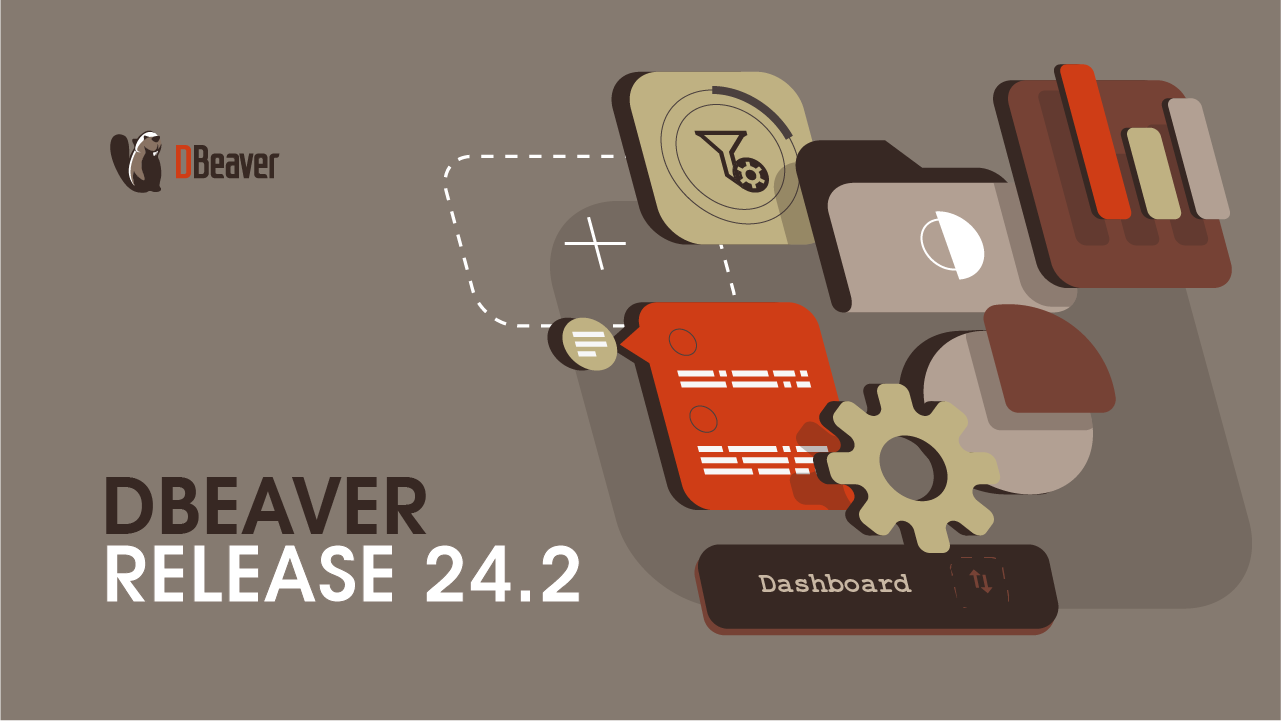We’re excited to share our latest product updates in DBeaver 24.2. This release brings new features and improvements to enhance your database management experience. Let’s dive into what’s new.

It’s Easy to Migrate to DBeaver
Many of our users are already familiar with database management tools. We’ve made the migration process easier for those who are switching to DBeaver or consolidating their database work.
Migrate from other tools:
DBeaver now offers a feature that lets you easily import your settings and configurations from popular database tools like IntelliJ IDEA, DbVisualizer, and MySQL Workbench. This feature is accessible through the “Import” option in DBeaver.
Here’s what you can expect:
– IntelliJ IDEA users: Import all your connections from the Database Tools plugin.
– DbVisualizer users (version 24.1.4 or newer): Import your connections.
– MySQL Workbench users: Transfer your MySQL connections and settings.
Migration from DBeaver PRO to Team Edition
We’ve received requests from customers who need to transition from individual projects to team environments. In response, we’ve developed a feature that allows you to import projects from DBeaver Lite, Enterprise, and Ultimate Editions to DBeaver Team Edition.
With this feature, users can transfer their individual projects, including connections, ER diagrams, scripts, and other resources, into Team Edition.
The import process is straightforward: log into DBeaver Team Edition, select Import from File in the main menu, choose the project directory or archive, define the project name, and click Finish to complete the import. Your project will appear in the Projects view.
If you’d like to learn more about the Team Edition import process, please refer to the full documentation here.
This enhancement allows teams to consolidate their work in a shared environment without losing any of the intricate setups created in the individual product.
Technical Improvements
Tooltips with semantic errors:
We’ve improved the SQL Editor with new tooltip functionality to help you catch errors more effectively. When you hover over highlighted errors in your SQL scripts, tooltips will appear, providing detailed explanations of the issues directly within the Editor.

This update introduces semantic error detection, where the SQL Editor identifies and marks semantic errors in your query. Each hint can contain multiple messages, offering precise insights into issues with your SQL statements. You can quickly navigate to the error source directly from the tooltip or via the Problems view, streamlining the debugging process.
Metadata editor for struct types:
The Metadata Viewer in CloudBeaver and the web version of DBeaver Team Edition now support struct data types. This enhancement lets users view complex data structures directly within the Metadata Viewer, providing clearer visibility into nested or structured data.
By presenting complex data types in a clearer format, users can easily navigate and analyze their database models.
Data Compare Improvements
In DBeaver 24.2, the Data Compare feature was enhanced with the ability to compare the results of SQL queries. Previously, users could only compare data between two tables. Now, you can set up a query and compare its result with another query or a table directly. Additional functionality can be relevant in cases where users must validate requests or compare records without working with entire tables.
To use this new functionality:
1. Open the Data Compare dialog;
2. Enter SQL queries directly in the comparison setup instead of selecting tables from the navigation tree;
3. Match the results of your queries against either another query or an entire table.
The comparison process remains as detailed and thorough as before, providing clear insights into data differences.
Database Improvements
DBeaver PRO products support Dashboards and Legacy Dialect for BigQuery:
DBeaver 24.2 now includes predefined dashboards for Google BigQuery, expanding the set of tools available for database monitoring and management. These dashboards allow users to visualize key metrics and data from their BigQuery projects directly within DBeaver, enhancing the ability to analyze and interact with BigQuery data. This update adds to the existing support for dashboards in databases such as PostgreSQL, MySQL, Oracle, and Exasol.
Also, DBeaver PRO products now support Google BigQuery’s Legacy SQL dialect. This addition ensures compatibility with queries, allowing users to execute and manage their queries within DBeaver seamlessly. The feature was developed following requests from users who continue to work with Legacy SQL in their workflows.
Updating Cassandra driver versions to 4.18 and Yugabyte CQL to 4.15:
In DBeaver 24.2, we’ve updated our support for Cassandra and CQL by integrating a new driver, contributed by YugabyteDB. This driver supports the vector data type, introduced in Cassandra, which allows for operations like vector search. The update also improves compatibility with the latest versions of Cassandra and enhances the handling of various DDL statements and metadata operations.
New GaussDB Driver
In DBeaver 24.2, we are excited to introduce support for GaussDB, a distributed relational database from Huawei. This update was made possible thanks to contributions from the community. GaussDB is known for its high availability, security, and scalability, making it a popular choice for enterprise users worldwide. With this new driver, users can now easily connect to and manage their GaussDB databases within DBeaver.
You can also participate in product development by following the Contribute Your Code page on GitHub.
Of course, it is impossible to describe all of our latest updates in one blog post. If you want to learn about all of the changes, we invite you to read our release notes and download the new version.






